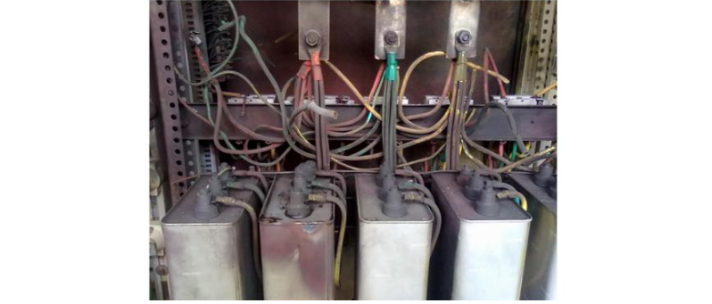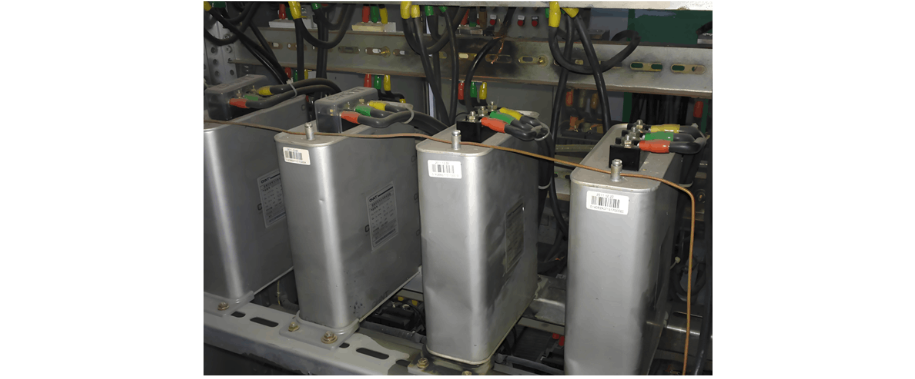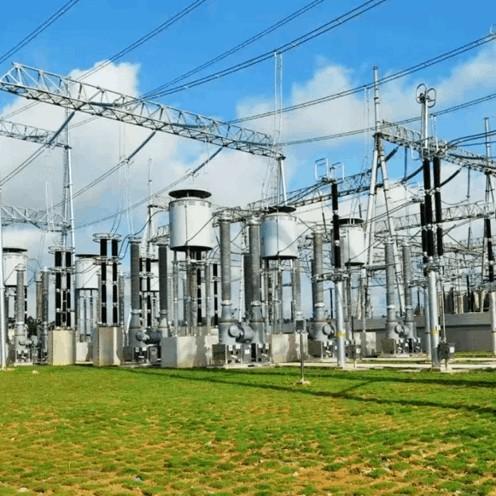Kudin da Kula da Ayyukan Kashiya
Ayyukan kashiya suna cikin abubuwa masu kula da kashiya don kungiyar juna da kashiya da kuma inganta tsarin kashiya. Da samun kula da kashiya a cikin yanki, suke tafiya rayuwar kashiya, kuma taka rawa kashiya da ci gaba da kashiya, kuma tana da muhimmanci a inganta cin kashiya da kuma yadda a yi amfani da abubuwan kashiya.
A nan ana bayyana mafi girman kudin da kula da ayyukan kashiya don tabbacin.
1. Hima ta Ayyukan Kashiya
(1) Yana bukatar hima ta daidai don kungiyoyi na ayyukan kashiya. Wadannan zai iya kasance hima ta kafin da ita ko karamin relay ta kafin da ita, ko karamin relay ta kafin da ita mai siffofin kafin da ita. Don ayyukan kashiya da rated current da 3.15 kV ko da zuwa, ya shawarci a lura fuses masu kafin da ita a kan kashiya baki daya. Rated current na fuse ya zama daga filayen siffofin fuse da inrush current wanda ake kula da shi, yawanci 1.5 marubucin rated current na kashiya, don hana bangaren ci gaban tanki.

(2) A cikin wadannan, za a iya lura hima ta daidai idan an bukata:
Idan ci gaban kashiya yana faruwa da kyau, za a iya lura abubuwa masu inganta hina da ci gaban kashiya ba zama da 1.1 marubucin rated value.
Amfani da automatic circuit breakers da ke daidai don kula da kafin da ita, inda kafin da ita ba zama da 1.3 marubucin rated current ba.
Idan ayyukan kashiya suka haɗa da linshi, za a iya amfani da surge arresters da ke daidai don kula da atmospheric overvoltages.
A cikin systems na high-voltage inda short-circuit current yana fi 20 A, ko idan standard protective devices ko fuses ba su iya inganta ground faults da daidai ba, za a iya lura single-phase ground fault protection.
(3) Zan so kuɗi da zan iya zama da sabbin inganta waɗannan hima ta daidai ita ce kamar hukuma masu daidai. Barazan da ake amfani da shi, system na hima ta ya kamata yana da:
Sensitiveness da ke daidai don kula da internal faults a kan kashiya baki daya ko kuma failure of individual elements.
Yadda a iya kula da kashiya baki daya ne, ko kuma yadda a iya tabbatar da kashiya da take lafiya a kan kashiya da take kula da shi.
Ba zan iya kula da kafin da ita a kan switching operations ko system faults kamar ground faults ba.
Zan iya amfani, kula, test, da kula da shi.
Low power consumption da operating cost.
(4) Babu zan iya amfani da automatic reclosing a kan kungiyoyi na ayyukan kashiya. Amma, za a iya amfani da undervoltage release trip device. Saboda haka, ayyukan kashiya ke bukatar lokaci don kula da shi. Idan an yi reclose a kan kula da shi, zai iya kasance residual charge da polarity opposite to the re-energizing voltage, wanda zai iya faɗa kafin da ita mai siffofin kafin da ita wanda zai iya jan tasiri ga casing, oil spraying, ko kuma explosion.
2. Kula da Kula da Ayyukan Kashiya
(1) Idan an kula da ayyukan kashiya, za a iya amfani da megohmmeter don kula discharge circuit.
(2) Ana bayyana wasu abubuwa a kan switching capacitor banks:
Babu zan iya haɗa da kungiyoyi na ayyukan kashiya a kan grid idan bus voltage yana fi 1.1 marubucin rated voltage.
Idan an kula da kungiyoyi na ayyukan kashiya daga grid, babu zan iya kula da shi a kan lokacin da kawai 1 minute, illa a kan automatic repeated switching applications.
Circuit breakers da ake amfani da su don switching ba zan iya faɗa dangerous overvoltages ba. Rated current na breaker ya zama da 1.3 marubucin rated current na kungiyoyi na ayyukan kashiya.
3. Discharge of Power Capacitors
(1) Idan an kula da kungiyoyi na ayyukan kashiya daga grid, kungiyoyin kashiya zai iya kula da shi automatically. Terminal voltage zai iya faruwa da kyau, inda, kowane rated voltage, ba zan iya fi 65 V a kan lokacin da kawai 30 seconds daga kula da shi.
(2) Don hana hankali, automatic discharge devices zai iya haɗa a kan load side na circuit breaker na kashiya da kuma directly in parallel with the capacitor (ba zan iya haɗa da switches, isolators, ko fuses a kan series). Kungiyoyin kashiya da suke haɗa da non-dedicated discharge devices, kamar voltage transformers (for high-voltage capacitors) ko incandescent lamps (for low-voltage capacitors), ko kuma those directly connected to motors, ba zan iya haɗa da additional discharge devices ba. Idan an amfani da lamps, zan iya yanke service life tare da increasing the number of lamps in series.
(3) Idan an kula da kungiyoyi na ayyukan kashiya, kowane automatic discharge, za a iya amfani da grounded, insulated metal rod don kula da terminals na kashiya manually.
4. Maintenance and Care During Operation
(1) Kungiyoyin kashiya zai iya haɗa da trained personnel, kuma operational records zai iya haɗa da shi.
(2) Visual inspections of operating capacitor banks zai iya haɗa da shi daily as per regulations. Idan an sami tank bulging, za a iya kula da unit immediately to prevent failure.
(3) Phase current in the capacitor bank zai iya haɗa da ammeters.
(4) Babu zan iya kula da kashiya idan ambient temperature yana fi −40 °C. A cikin operation, average temperature ba zan iya fi +40 °C for more than 1 hour, +30 °C for more than 2 hours, or +20 °C annually. Idan limits suka fi, artificial cooling (e.g., fans) zai iya haɗa da shi ko kuma kungiyoyin kashiya zai iya kula da shi daga grid.
(5) Temperature checks at the installation site and on the hottest spot of the capacitor casing zai iya haɗa da mercury thermometers or equivalent, kuma records zai iya haɗa da shi (especially during summer).
(6) Operating voltage ba zan iya fi 1.1 marubucin rated voltage; operating current ba zan iya fi 1.3 marubucin rated current.
(7) Connecting capacitors zai iya faɗa system voltage, especially under light load. In such cases, part or all of the capacitor bank should be disconnected.
(8) Bushings and support insulators must be clean, undamaged, and free of discharge marks. The capacitor casing must be clean, undeformed, and leak-free. No dust or debris should accumulate on the capacitor or its support frame.
(9) All connections in the capacitor circuit (busbars, grounding wires, circuit breakers, fuses, switches, etc.) must be inspected for reliability. Even a loose screw or poor contact can lead to premature capacitor failure or system-wide incidents.
(10) If a dielectric withstand test is required after a period of operation, it must be conducted at the specified test voltage.
(11) Inspection of capacitance values and fuses should be performed at least once per month. The loss tangent (tanδ) of capacitors should be measured 2–3 times per year under rated or near-rated voltage to assess insulation condition.
(12) If a capacitor bank trips due to relay operation, it must not be re-energized until the cause is identified.
(13) If oil leakage is found during operation or transport, it may be repaired by brazing with tin-lead solder.

5. Switching (Isolation) Operation Precautions
(1) Under normal conditions, during complete substation shutdown, the capacitor bank circuit breaker should be opened first, followed by the outgoing line breakers. During re-energization, the sequence should be reversed.
(2) In the event of a complete power outage, the capacitor bank circuit breaker must be opened.
(3) After a capacitor bank trips, forced re-energization is prohibited. If a protective fuse blows, the fuse must not be replaced and re-energized until the cause is determined.
(4) Capacitors must not be energized while charged. After disconnection, re-closing must be delayed for at least 3 minutes.
6. Fault Handling During Operation
(1) In case of oil spraying, explosion, or fire, immediately disconnect the power supply and extinguish the fire using sand or a dry-type fire extinguisher. Such incidents are typically caused by internal/external overvoltages or severe internal faults. To prevent recurrence, ensure fuse ratings are correct, avoid forced re-energization after tripping, and do not use auto-reclosing.
(2) If the circuit breaker trips but the branch fuse remains intact, discharge the capacitor for 3 minutes, then inspect the breaker, current transformer, power cable, and external condition of the capacitor. If no abnormalities are found, the fault may be due to external disturbances or voltage fluctuations. After confirmation, a test re-energization may be attempted. Otherwise, conduct a full energized test of the protection system. If the cause remains unidentified, dismantle the bank and test each capacitor individually. Do not attempt re-energization until the cause is found.
(3) When a fuse blows, report to the duty dispatcher and obtain approval before opening the capacitor circuit breaker. After de-energizing and discharging, perform an external inspection (e.g., bushing flashover, casing deformation, oil leakage, grounding faults). Then measure inter-terminal and ground insulation resistance with a megohmmeter. If no fault is detected, replace the fuse and resume operation. If the fuse blows again upon re-energization, isolate the faulty capacitor and restore service to the remainder.
7. Safety Precautions When Handling Faulty Capacitors
Before handling a faulty capacitor, disconnect its circuit breaker, open the disconnect switches on both sides, and discharge the bank through the discharge resistor (e.g., discharge transformer or VT). Due to possible residual charge, a manual discharge must still be performed. First, securely connect the grounding end of the grounding rod, then repeatedly discharge the capacitor terminals until no sparks or sounds occur. Finally, secure the ground connection.
Faulty capacitors may have poor internal connections, open circuits, or blown fuses, leaving residual charge. Therefore, maintenance personnel must wear insulating gloves and short-circuit the two terminals of the faulty capacitor with a shorting wire before touching it.
For capacitor banks with double-star connections, the neutral line, and for series-connected capacitor strings, individual discharge must also be performed.
Among substation equipment, power capacitors are relatively vulnerable due to weaker insulation, higher internal heat generation, poor heat dissipation, higher internal failure rates, and combustible internal materials, making them prone to fire. Therefore, favorable low-temperature and well-ventilated operating conditions should be provided whenever possible.
8. Repair of Power Capacitors
(1) The following faults may be repaired on-site:
Oil leakage from the casing can be repaired by soldering with tin-lead alloy.
Oil leakage at bushing welds can also be repaired by soldering, but care must be taken to avoid excessive heat that could damage the silver plating.
(2) Failures such as ground insulation breakdown, significantly increased loss tangent, severe casing bulging, or open circuits require repair at specialized capacitor service facilities equipped with proper tools and testing equipment.
























